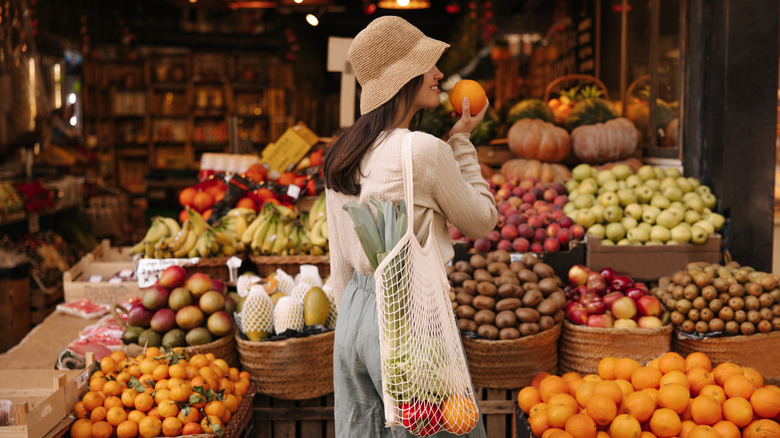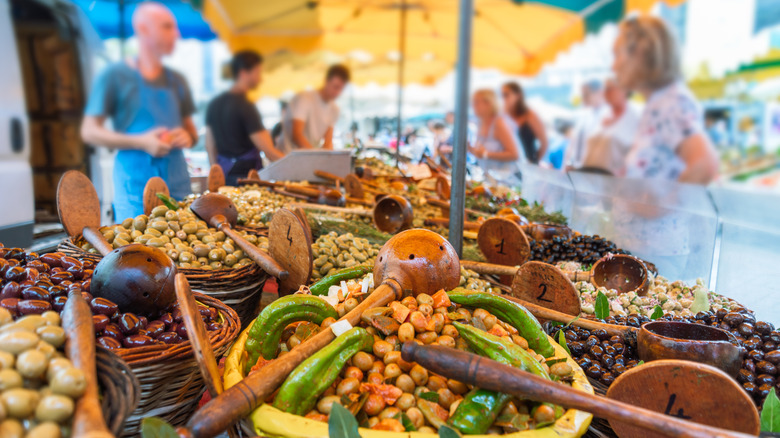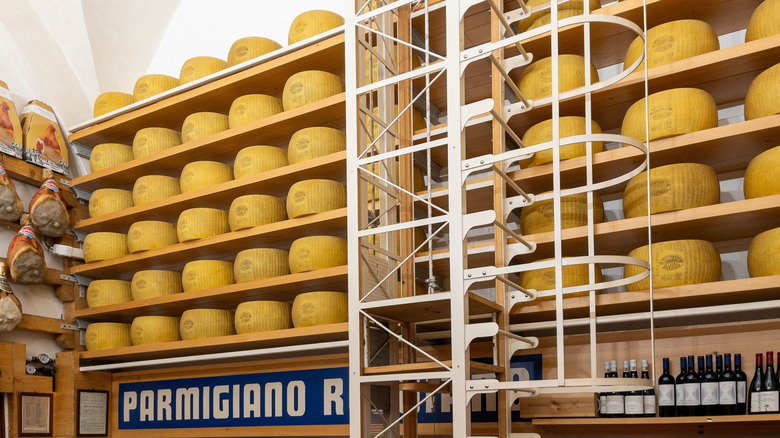Why Food Is Better And Cheaper In Europe Vs The United States
Dipping that piece of golden-crust bread in a small dish of olive oil on an incredible food tour in Marbella, or the first bite into that peach fresh off the market in Greece, can become travel highlights that you will remember long after the tan has faded. When you try to replicate the same moment back home, alas, it's not quite the same. Many travelers have noticed that food not only tastes better in Europe, but is also cheaper. While price comparisons vary depending on the exchange rate, Dr. Steven Masley, M.D., wrote in his blog that during an eight-week trip across France, Spain, and Portugal, produce was 30% to 70% cheaper, and it generally had more flavor.
One of the factors that contributes to this perception is that food tastes better when we are relaxed, as we tend to be when we are on vacation. While staying away from sweeping generalizations, let's look at some other elements that support why many tourists find that food is better and cheaper, which may provide a few tips to save on food on your next trip to Europe.
Food shopping attitudes in Europe
Looking at how Europeans source their food may hold the first clue on how to make the most out of your food tourism experience. European consumers choose to buy food products on local farmers' markets, and tend to associate local seasonal food with quality, healthy eating, and a lower carbon footprint. Knowing the producer also means they can ascertain the provenance of the food and support local agriculture, all while purchasing goods at a fair price. These shorter supply chains provide a convenient and affordable alternative to the traditional store. Even at the best food markets in Europe, food is often less expensive than in the U.S.
These cultural attitudes are transmitted around the table, as children learn habits by eating with their family at home and with friends at school. Mealtime conversation often turns to what is good and in season at the time, and when and where to shop for tomorrow's dish, shaping the food sourcing preferences of the next generation of consumers.
The effect of regulations on better and cheaper food in Europe
Another way that Europe celebrates its gastronomic heritage is by protecting traditional know-how and regional products. In France the "Appellation d'Origine Contrôlée" (AOC) label on your Roquefort cheese means it was made in that particular area of the Aveyron with traditional methods and specific ingredients. The same thing goes for Italy's "Denominazione di Origine Protetta" (DOP) on the singularly delicious Parmigiano Reggiano. On a European scale, the Protected Designation of Origin (PDO) and Protected Geographical Indication (PGI) labels ensure the authenticity of local specialties, from Hungary's Szeged paprika to Belgium's Jambon d'Ardenne. This strong attachment to locality builds trust with consumers and helps support small-scale producers and the sustainability of the local economy, ensuring the continuity and quality of regional specialties.
Europe has a different approach to food ingredients and banned a number of additives likely to be found in ultra processed foods, including candy, carbonated soft drinks, and mass-produced breads and baked goods. The United States is the number one consumer of ultra-processed foods (UPFs) which dominate even staple foods in mainstream supermarkets such as Target or Walmart. Healthier options are available in higher-end stores like Whole Foods, where shoppers can expect to pay a premium, according to a study published in 2024. A comparison of mainstream supermarkets in Spain and France found that they were able to offer affordable options comparable to the quality of the higher-end food stores in the United States. In other words, shoppers could buy Whole Foods quality at Walmart prices.


